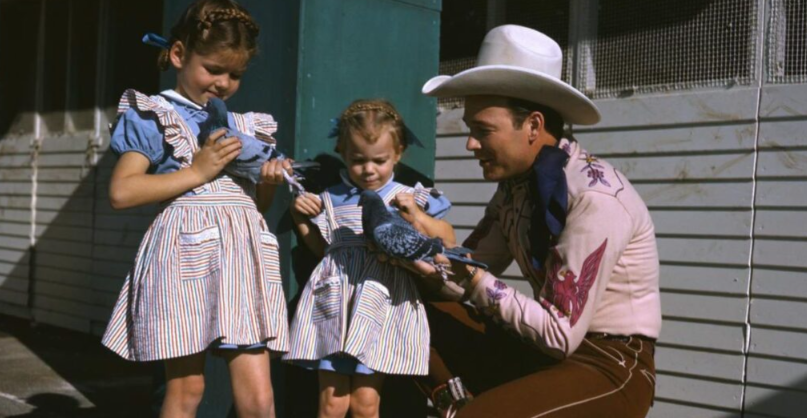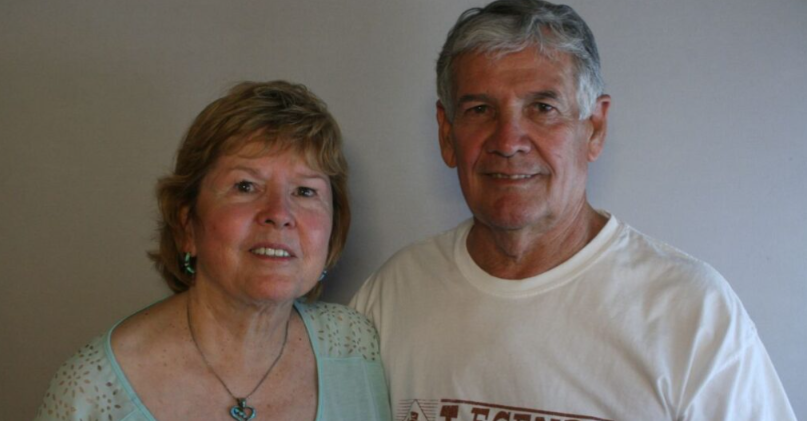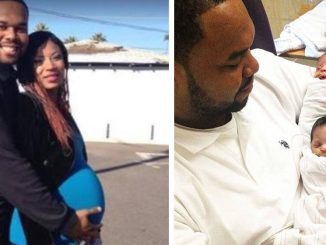Roy Rogers, famously dubbed the “King of the Cowboys”, and his spouse Dale Evans, known as the “Queen of the West”, emerged as early luminaries in Hollywood’s nascent television era.
Rogers, celebrated for his role as the singing cowboy alongside his loyal palomino Trigger, ascended to become the preeminent star of Westerns during his time. He starred in more than a hundred films and headlined his own television series, The Roy Rogers Show.
Over the course of his life, Rogers fathered a total of nine children through his marriages with Grace Arline Wilkins and Dale Evans. While some of his offspring followed his footsteps into the entertainment industry, others pursued quieter lives away from public scrutiny. Here’s an individual glimpse into each of Roy Rogers’ children:

Cheryl Rogers: Adopted in 1941 with his second wife, Grace Arline Wilkins, from Hope Cottage in Texas. Cheryl grew up in the presence of her father’s beloved horse Trigger and appeared in several of his films during her childhood, including Meet Roy Rogers and Trail of Robin Hood.
Linda Lou Rogers: Born two years after Cheryl’s adoption to Grace. Linda married Gary Johnson, a minister, and the couple shared over four decades together until his passing in 2008. Linda now resides in California, surrounded by their children and grandchildren.
Roy Rogers Jr. (Dusty): The only biological son of Roy Rogers, born shortly before Grace’s untimely death due to childbirth complications. Dusty made childhood appearances on The Roy Rogers Show and later managed his father’s career. He also performed with the Sons of the Pioneers and formed his band, Roy Rogers Jr. and the High Riders.

Robin Elizabeth Rogers: The only child born to Dale Evans and Roy Rogers, Robin tragically passed away before her second birthday due to complications from the mumps. In her memory, Dale authored the book Angel Unaware.
Dodie Rogers: Adopted at seven months old, Dodie, of Native American heritage, married Jon Patterson, a NASA employee, and they welcomed a daughter named Kristin. Dodie now enjoys her role as a grandmother.
Mimi Rogers: Born Marion Fleming in Edinburgh, Scotland, Mimi was discovered by Roy and Dale in a children’s home due to her exceptional singing talents. She became a cherished member of their family, marrying Dan, a Marine Corps member, with whom she had three children before his passing. Mimi is now a grandmother herself.

Debbie Rogers: Adopted during the Korean War after becoming orphaned, Debbie tragically died at the age of 12 in a bus accident in Los Angeles while traveling with other children from her church.
Sandy Rogers: Adopted following Robin’s passing, John David “Sandy” Rogers later joined the U.S. Army but sadly passed away at age 18 in a choking incident at a military hospital in Germany.
Tom Fox: Dale’s biological son from her previous marriage, Tom was raised by Roy and Dale. He pursued a career as a school teacher and music minister before his passing in 2012.

The saga of Roy Rogers and Dale Evans’ family is marked by a tapestry of happiness, sorrow, and love, emblematic of their enduring family values and profound legacy.
Rescuers Find Scared, Injured Pup Trying To Hide Himself From Humans In A Bag
In a heart-wrenching scene that unfolded in a bustling city, a cry for help echoed through the streets—a plea for mercy from a scared and injured puppy, hidden away in a desperate attempt to shield himself from the world.

The call came to Animal Aid, an organization dedicated to the welfare of animals in distress. With urgency in their hearts, they mobilized their team and set out to rescue the frightened pup from the shadows of fear.
As they approached the scene of the distress, they were met with a sight that pierced their souls—a small, trembling figure cowering beneath a bag, his eyes wide with terror and pain. It was clear that this pup had been through unimaginable suffering, his body bearing the scars of neglect and abuse.

With gentle hands and soothing words, the rescuers sought to coax the pup out from his hiding place, offering reassurance and comfort in the face of his fear. But the pup remained wary, his instincts telling him to retreat further into the darkness.
Undeterred by the challenge before them, the rescuers employed a clever tactic—they used crackers, a simple yet effective lure to entice the pup out into the open. Slowly but surely, the scent of the treats proved irresistible, and with cautious steps, the pup emerged from his hiding spot, his eyes wary but curious.

With a mixture of relief and determination, the rescuers gently scooped up the pup, cradling him in their arms as they whisked him away to safety. And as they arrived at Animal Aid’s facilities, they knew that the journey was far from over—the pup would need extensive medical care and rehabilitation to heal his wounds, both physical and emotional.

But despite the challenges ahead, there was hope in their hearts—for the pup, and for all the animals like him who had been cast aside and forgotten by society. With each passing day, the pup grew stronger and more confident, his spirit buoyed by the love and support of those around him.

And today, thanks to the tireless efforts of Animal Aid and the unwavering kindness of strangers, the once scared and injured pup is thriving—a testament to the resilience of the canine spirit and the power of compassion to transform lives.

So here’s to Jumper, the brave little pup who dared to hope in the face of adversity, and to all the animals who have found solace and sanctuary in the arms of those who care. May their stories inspire us to be kinder, more compassionate beings, and may we never turn a blind eye to those in need.
Watch the video below for more information.



Leave a Reply